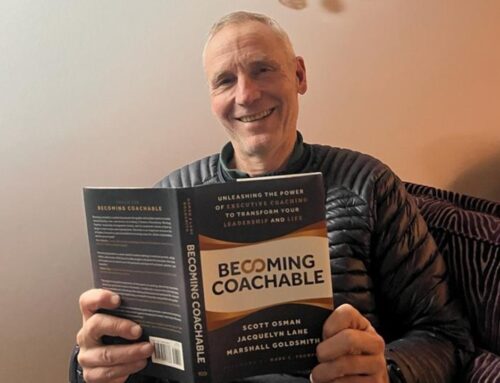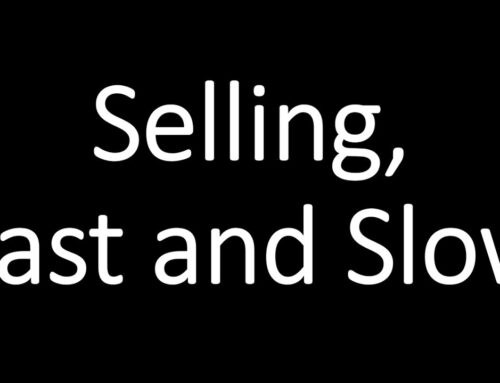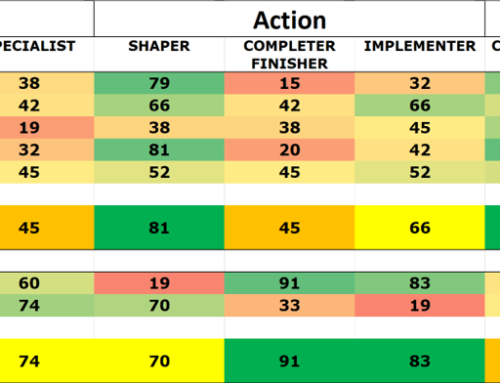How Understanding the Interactions and Differences can Double or more your Return on Investment
Used in the right combination, blending training, mentoring and coaching and achieving extraordinary results is increasingly common. One Start-Up achieved 100% topline growth, another successfully executed an unimaginable rapid product ramp-up and a third completed a CEO handover and grooming of the future leadership team. Get the mix of training, mentoring and coaching wrong and organizations end up collecting binders of training materials which mostly collect dust.
As a former “pure” trainer myself for 20 years, I spent years training hundreds of Lean Six Sigma Belts through up to 3,478 Powerpoint slides over 4 weeks. This approach worked well, provided the right prerequisites are present, like aligning the top team on training-sized projects, providing resources to both the project leader and the sponsor. One leading pharmaco used Lean Six Sigma to reduce COGS from 25% to less than 18%.
And yet the extraordinary results I have seen as a former trainer and current coach – accomplished faster and with much less effort – encouraged me to share this story. Should your team look to get more results in less time and with less investment by blending training, mentoring, and coaching, read on!
First a sentence or two to define Training, Mentoring, and Coaching.
Training
Training is about providing new skills to the organization.
Examples include Project Management, conducting a One on One meeting, learning to use software, successfully leading a Lean Six Sigma project.
Mentoring
Mentoring is when an experienced practitioner shares their expertise to help a less experienced mentee benefit from lessons learned by the mentor. Often without financial compensation.
Examples include when a senior Finance or HR executive shares their experience with a junior Finance or HR leader. Some mentors are directive and tell. The best mentors enter a mentoring session with words like, “I have in my mind 3 ways to approach your issue. Before I share my reflections, I ask you to please share 3 ways you want to consider to approach this challenge.”
Michael Dell would use this process in meetings when he would insist on three options to drive an immediate decision: one conservative, one stretch, and one “out of the box.”
Coaching
A coach helps successful leaders or teams to discover and unpack their dreams, beliefs, feelings and behaviors and gain clarity on progressing on their most important work. Call it clarity to action.
Sometimes coaching takes leaders or teams in a completely new direction. Like the time a fellow coach asked me for permission to ask a question and let this one out: “Bill I hear from your work that you are extremely passionate about helping each and every one of your coaching clients to discover and become their best selves every day. And you told me that your wife and children are very important to you.
May I ask you a question please?” to which I replied, “Please.” Then the hammer, “Bill, do you take the same care and effort to help your wife and daughters to discover their best selves each day as you do for your clients?” Ouch. This question landed because it was asked with love and respect. This was a knockout punch! And a wake-up call. Today my family and I are grateful to this highly skilled coach for asking this question. My perceptions and behaviors with my wife and children are measurably better today thanks to this coaching.
During a recent day of reflection diving into my log of 700+ coaching sessions received and nearly 1400 individual and team coaching sessions provided, several themes around training, mentoring, and coaching stand out.
The right mix of coaching, training, & mentoring is like adding 1 + 1 +1 and getting 10!
The most impactful results I have been privileged to witness occur when training, mentoring, and coaching are artfully combined. Since I have been deeply involved in all three of these “helping” professions, my insights may be biased. What have I noticed?
One successful Sales VP used coaching combined with sales management training to build out his team – doubling sales and improving employee engagement. The combination consisted of sales management techniques provided by an online course combined with one on one coaching to help him envision and become his best self.
Or the VP Operations who faced such a steep ramp-up that his will was seriously impacted. Steering him to a MoreSteam online resource and facilitating a few half-day sessions enabled him to lead his team across multiple geographies to meet the ramp-up and achieve the highest production output in company history. My hypothesis is that had we approached the challenge from a training perspective and not so strongly as a coach first and trainer second, the results would have been much slower.
Another example from Switzerland’s largest employer, focused to improve cross-functional teamwork to counter the aggressive market invasion of a nimble new competitor. As much as cross-functional skills were needed, from my perspective, the greatest contribution to this team winning back market share and improving margins resulted from not training the team in new skills, but rather helping the team to discover and unleash their collaborative spirit to perform. In other words, the individual coaching layered on top of the skills training.
It is not about the coach.
Sometimes skills need to be learned. Beware of hiring a coach who cannot mentor when learning new skills may be part of the solution you seek. Today coaching is widespread enough that coaches able to support training are available. My mentor Marshall Goldsmith, whose focus is on helping CEO’s change their behaviors is a big fan of coachingnot being about the coach. And I cannot agree more! Those individuals and teams leveraging coaching to become their best selves are
It is about the coach.
If you are not clear around the challenge you face in terms of the need for new skills, take time to reflect on the combination of training, mentoring and coaching which will best serve your organization. One Swiss Entrepreneur of the Year did just this when we reviewed our coaching contract. His instinct, which I consider today more true than ever, was that he and his team would save time and gain multiple benefits from the contracting for a mix of training and coaching.
The coaching contract is not a legally binding contract; rather it is an alignment between the coach and the champion or team. (I never call those receiving coaching a “coachee” since this feels disrespectful.)
Not all coaches use written contracts today; the best coaches have detailed contracts which capture many “extra” ways the champion and client team can benefit even more. Last week one outstanding coach I work with served up a 17 page coaching contract including appendices!
Topics covered in a coaching contract may include:
- Will the coaching relationship be synchronous (based on the coach and the champion being present together) or can the coaching relationship benefit from advances in technology which allow asynchronous coaching with notes, reflections, status surveys and even daily questions shared via a cloud-based platform?
- Will the measurable goals of coaching be defined at the outset?
- Will the coaching process engage the stakeholders of the champion or team?
- Will the results be measurable and if so, who will determine progress?
- What code of conduct do the coach and the champion or team agree?
Would you agree that the successful blending of training, mentoring and coaching feels to be in the early stages of infancy? Do you have examples where separating or blending these learning and development investments has increased or held back your business success?
I invite you to join the conversation
Bill Zeeb and the infinitas team help successful leaders and teams to be recognized and acknowledged by their coworkers as measurably more effective in 12 months or less. Guaranteed. Bill’s passion is to find and share a better way to leadership growth leveraging the scientific method and a highly structured and highly time efficient process proven with hundreds of CEO’s. A US citizen, who has lived and worked in Europe since 1990, Bill loves skiing 100+ days in one season, competing in extreme triathlons (first ever podium Alpes d’Huez 2019) and working with leaders who are ready to do the hard work to achieve extreme leadership and business growth, to better serve their teams and become better ancestors.




